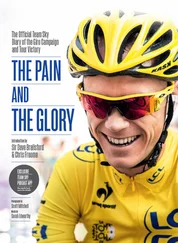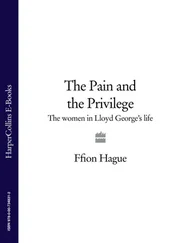I WAS NEVER one for hanging pictures or sticking up posters or postcards. I’ve always preferred to be surrounded by bare, plain surfaces and to have my desk facing a wall rather than a window. Early in 1982, however, when I was a lecturer in a college of advanced education and had been moved to a new office, I discovered that a part of the wall above my desk was a display board with a supply of drawing pins stuck into it, and after staring at it for a few weeks I went against my usual policy. I was careful and selective. The display board was big enough for thirty or forty postcard-sized pictures, but I pinned up only three and grouped them together with much bare space around them. The first two were portraits: one of Emily Brontë and the other of Marcel Proust. The third was actually two linked scenes, the first showing a field of horses entering the straight, and the second showing the winner of the race and his nearest rivals as they reached the winning post. The race was the T. M. Ahern Memorial Handicap, run at Doomben in Brisbane on 1 June 1946. The total prize money for the race was ten thousand pounds, only two hundred pounds less than for the Melbourne Cup of the same year. The race was run over a distance of about 1320 metres, in today’s measurements, and was contested by twenty-seven of the best sprinters in Australia.
Races in Brisbane are run in a clockwise direction, and so my picture of the horses on the home turn was at the right of the picture of the finish. The pictures were blurred reproductions of contemporary newspaper illustrations, but it was enough for me that the names of the chief contenders were printed legibly above them. I knew when I first pinned up the pictures that the straight at Doomben was comparatively short for a metropolitan racecourse. I have since learned that it was about 370 metres in 1946. The picture at the right showed Bernborough in about twentieth place and about thirty-five metres from the leaders. In the picture at the left, Bernborough was passing the post in first place, several metres ahead of the second horse.
The twenty horses that Bernborough passed were not tiring stayers at the end of a gruelling long-distance race but crack sprinters at full gallop. Bernborough did not always win his races in this way, but he did it often enough to give rise to an expression often used by journalists and others for many years afterwards. A racehorse or a sportsperson or even a team achieving victory from a seemingly hopeless position was said to have put up a Bernborough finish.
I worked out of the same office from 1981 until I took early retirement in 1995, by which time my place of employment had become a university. During those years, I sometimes sensed that some or another visitor to my room was puzzled by the odd little group of images huddled together on the otherwise bare wall. To the few who enquired I was pleased to explain that the young woman from Victorian England, the eccentric Frenchman, and the bay stallion from Queensland were equally prominent figures in my private mythology and continued to enrich my life equally.
In a better sort of world, I would not have to write this paragraph, but Bernborough (Orange, purple sleeves, black cap) has been somewhat forgotten by now, even by followers of racing. He was born a few months after my own birth and died a few weeks before my twenty-first birthday. His birthplace was near Oakey, on the Darling Downs, and he died at Spendthrift Farm in Kentucky. He was a huge animal but was said by his handlers to be unusually placid for a stallion and highly intelligent. The most extraordinary part of his story was that few Australians had heard of him until he was six years old. Until then he raced only at Clifford Park racecourse in Toowoomba, where he won about half of his races. Bernborough’s defeats there may have been the result of his having to carry huge weights or of the machinations of his connections. His being confined to Toowoomba came about as a result of suspicions by the controlling body of stewards in Queensland that he was owned not by his purported owner but by a man who had been disqualified for life by Queensland stewards for organising a ring-in at Eagle Farm racecourse in Brisbane. The Queensland stewards refused to allow Bernborough to race anywhere in Queensland; stewards in other states concurred with their Queensland colleagues; the local steward at Toowoomba, however, dissented from the Australia-wide ban and Bernborough had his first twenty starts there.
The impasse was finally resolved when Bernborough was sold at a public auction to Azzalin Romano, a wealthy Sydney restaurant owner. The horse was then transferred to the Sydney stables of Harry Plant, who was himself Queensland-born and had been, as a young man, the buckjumping champion of that state. Bernborough had his first start for Romano and Plant at Canterbury in December 1945. He finished fourth. During the next ten months, he won fifteen consecutive races at the highest level in Sydney, Brisbane, and Melbourne. His winning sequence ended when he finished fifth in the Caulfield Cup in October 1946. At his next start, at Flemington on Derby Day, he broke down during the race and was retired. After being sold and shipped to the United States, he had a highly successful career as a sire.
I have several books about Bernborough in my racing library. I’m grateful to the authors for having compiled a host of details that I could never have discovered myself. But no book and no newspaper article or magazine story that I’ve read has dealt adequately with Bernborough’s defeat in the Caulfield Cup of 1946. Nothing will convince me that Bernborough was beaten on his merits in that race. I still believe what my father assured me nearly sixty years ago was common knowledge among the inner circles of racing, which he had access to in those days: that Bernborough’s rider, Athol Mulley, a curse be upon his memory, stopped Bernborough from winning in return for a secret payment from one or more leading bookmakers, who stood to win a fortune if the horse was beaten.
There! I’ve stated in the public domain what I’ve brooded over in private for most of my life. No one can sue me. The participants, if such they were, are all dead. I’ve read all the arguments against my view: Mulley was a victim of circumstances; Bernborough met severe interference in running; the stewards never queried Mulley’s riding tactics. The plain fact is that Mulley rode Bernborough in the Caulfield Cup in a manner wholly different from the way he rode the horse on every other occasion when he had a large field to contend with. On every other occasion, Bernborough was saved for one last, mighty finishing run down the outside. In the infamous Caulfield Cup, his rider kept the horse buried in the ruck. To use a coarse expression describing the efforts of jockeys to stop their mounts from winning, Mulley was looking for arses to run into.
Writers intending to compare champion racehorses from different eras inevitably begin by declaring that no reliable means exists for making such comparisons. I won’t bother with any such disclaimer. Instead, I’ll propose that the person best able to quantify the achievements of racehorses is the handicapper and that the race most suited for comparing the opinions of handicappers is the Melbourne Cup, which has been contested by most of the champions of the Australian turf during the past century and a half. (The previous sentence implies that even the greatest sprinters are not to be called true champions: that no one would dare claim Black Caviar or Vain to be the equal of Phar Lap or Carbine.) In every year since 1861, some or another expert handicapper has assessed the career of each of the numerous entrants in the Melbourne Cup and has allotted to each a weight meant to give it an equal chance with every other. In 1946, soon after Bernborough was entered for the Melbourne Cup of that year, he was allotted the weight equivalent of 67.4 kilos. Only three other horses had previously been allotted a higher weight. Phar Lap was allotted 67.8 kilos in 1931, Carbine was allotted 68.7 in 1891, and The Barb was allotted 72.8 in 1869. Now, a querulous reader might accuse me of begging the question with my next claim, which is that The Barb does not deserve to be included in my comparison. The Barb, known as the Black Demon, was an exceptional horse in his time, but the number of racehorses in the 1860s was not to be compared with the numbers in later decades. The man who gave The Barb his preposterous weight (the horse never actually carried it; he did not contest the Cup of 1869) had never seen the like of The Barb, but no one has since thought it remotely likely that The Barb would have finished twenty and more metres ahead of Carbine in a Melbourne Cup, which is what their comparative weights claim. The next point in my argument, so to call it, is that Phar Lap and Carbine, when they were allotted their huge weights, had each won a Melbourne Cup in the previous year. When Bernborough was awarded his 67.4 kilos, he had never started in a Melbourne Cup. If Bernborough had won a Melbourne Cup, then the handicapper would surely have handicapped him in the following year as a greater horse than Phar Lap and perhaps even Carbine. But Bernborough did not win a Melbourne Cup, the querulous reader cries, and my hearing that cry in my mind has persuaded me to stop calling this paragraph an argument. Why should I try to persuade non-believers, anyway? I’ll argue no more. I’ll simply explain why I consider Bernborough to be a better horse than Phar Lap.
Читать дальше












